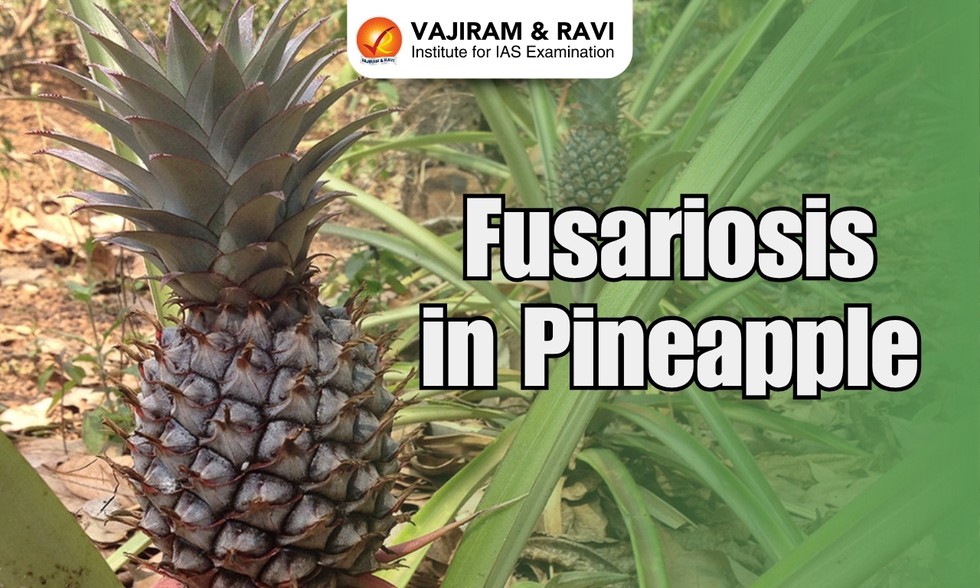About Fusariosis in Pineapple:
- Fusariosis is caused by the aggressive fungusFusarium moniliforme and one of the biggest threats to pineapple farming.
- The fungus warps the plant’s stem, blackens the leaves and rots the fruit from the inside out. For farmers, this means heavy losses and unreliable harvests.
Highlights of the research
- For years, traditional breeding techniques have struggled to keep up with the fast-evolving onslaught of such fungal foes.
- Scientists have identified the gene behind Somatic Embryogenesis Receptor Kinase (SERK) that can activate host defenses against plant diseases.
- Focusing on the AcSERK3 gene, part of the pineapple’s genetic code, known for helping plants both reproduce and survive stress, enhanced—or "overexpressed" the gene in pineapple plants.
- This genetic tweak charged the plant’s natural defences, allowing it to fight off the Fusarium fungus far more effectively than ordinary varieties.
Key Facts about Pineapple
- The pineapple (Ananas comosus L. Merr.) is the most economically significant fruit of the Bromeliaceae family.
- Required climatic conditions:
- It is mostly grown at low elevations in areas with a temperature range of 15 to 30ºC.
- It is tolerant to drought because of the special water storage cells.
- Rain: It can be grown with a wide range of rainfall from 600-2500 mm/ annum, the optimum being 1000-1500 mm.
- Soil: It can be grown in a wide range of soils, but does not tolerate water logging.
- It can be grown as a pure crop on plantation scale or as an intercrop in coconut gardens.
- Major Pineapple producing states: The states where pineapple is grown include Assam, Meghalaya, Tripura, Manipur, West Bengal, Kerala, Karnataka and Goa.
- Countries like Thailand, Philippines, Brazil, China, Nigeria, Mexico, Indonesia, Colombia and the USA produce pineapples.
